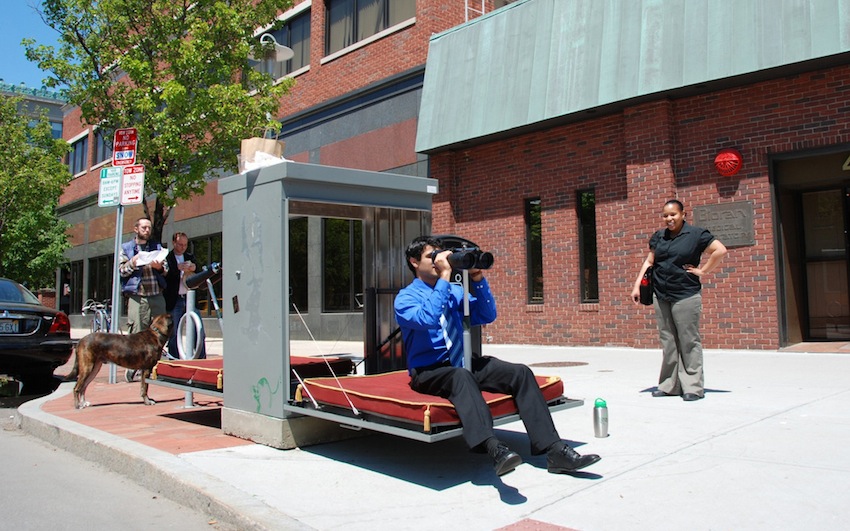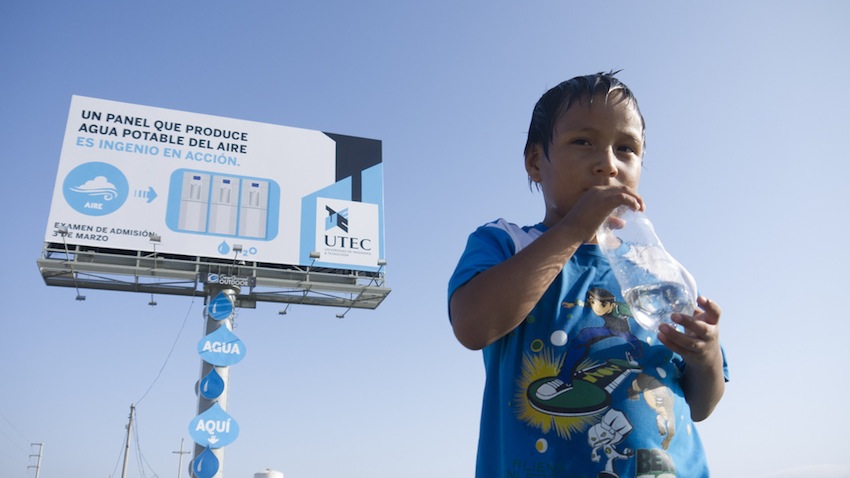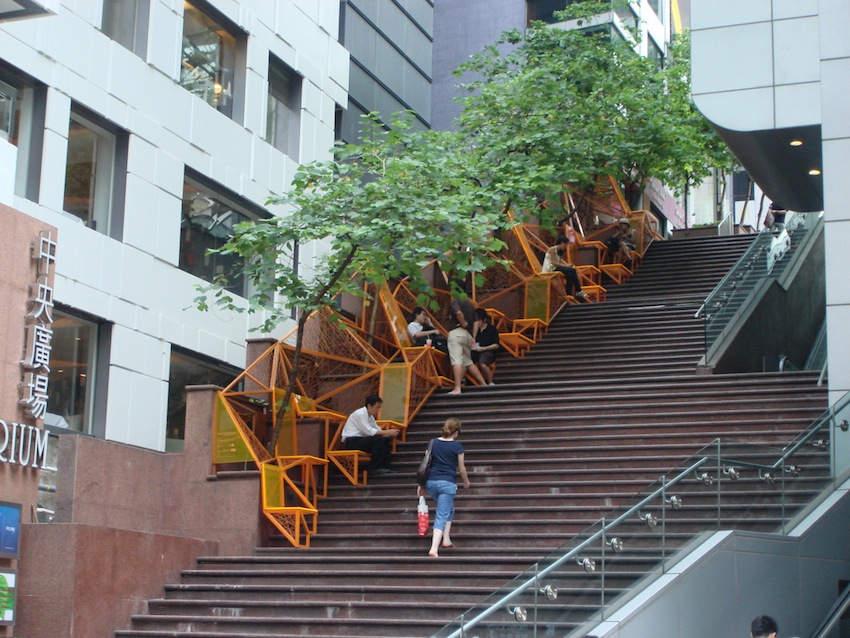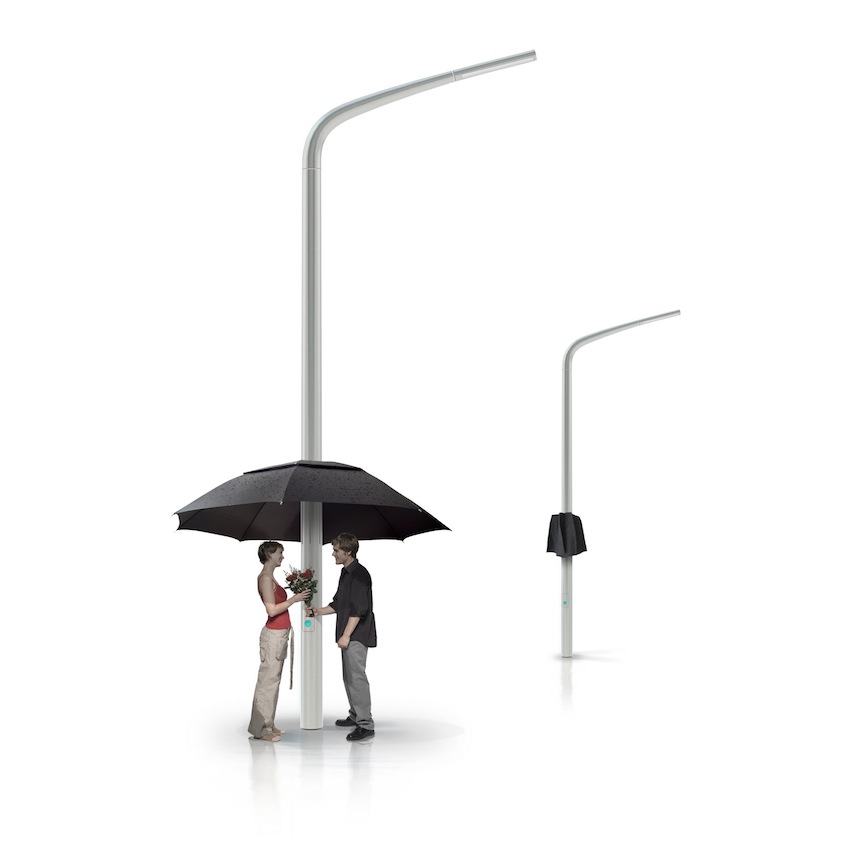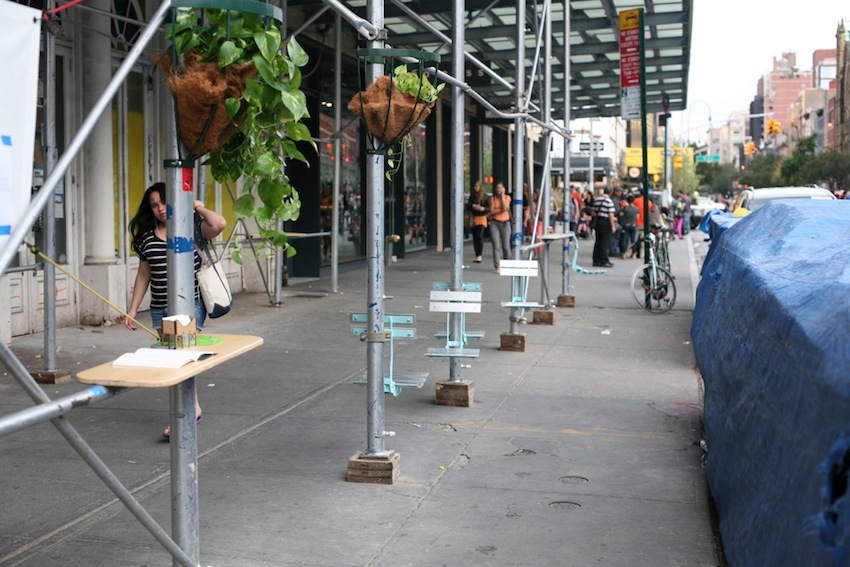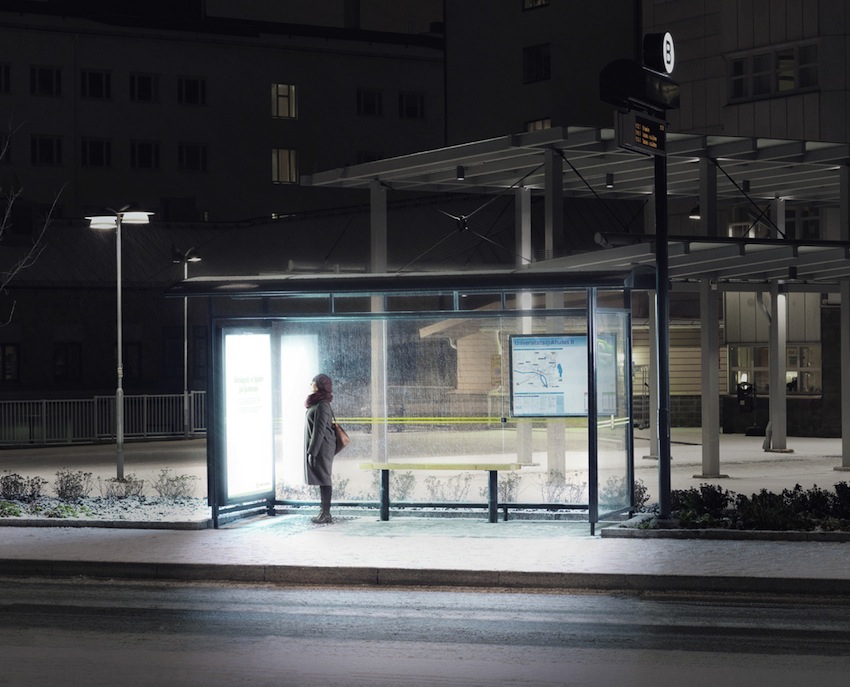Urban Renewal Projects Could Give the City a New Look
Billboards that turn humidity into drinkable water, utility boxes that convert into couches for pedestrians, and bamboo that grows from unused billboards—these are all concepts countries around the world are currently embracing by transforming existing structures to give them new uses, and Boston could do the same, experts say.
In a new exhibit at the Boston Society of Architects, called Reprogramming the City: Opportunities for Urban Infrastructure, which explores elements of architecture, engineering, and urban planning design, concepts like a converted utility box that serves as a comfortable spot to sit are on display for visitors, giving them an overview of ways in which infrastructures in cities are being re-imagined to serve additional functions.
Scott Burnham, an urban design director who was hired as a guest curator for the BSA exhibit, which runs through September, says Boston has a limited amount of space for new resources, and since there is a cap to the amount of things that developers can build, the secret is to find new uses for what is already there. “There is a need … we need to start looking at the hardware of the city as a platform of opportunity. It can be a great platform if the ideas are there. Can Boston do this? Absolutely,” he says.
Burnham, who left Boston 16 years ago, has traveled the world studying urban design and engineering projects while working on a few projects of his own. Since he recently returned to the area, he looks at this exhibit as a “home coming” of sorts. “I’m back home to show ideas about what could be possible,” he says.
One possibility that Burnham describes as “exceptional” comes from Peru. “The air has a humidity that is incredible, so they have taken an existing billboard and transformed it into a water collection device,” he says. “It gathers the humidity and channels it down to nothing more complicated than a faucet. It converts it into 25 gallons of drinkable water a day.”
Another design he would like to see U.S. cities pick up is housed in Sweden, 300 miles north of Stockholm where daylight is a commodity in the winter months. There, inventors turned bus stop advertisements into areas where riders could stand close by and soak in light from therapy lamps. “‘While people are waiting for the bus, they sit there for a few minutes and get the good light rays they are missing from the sun,” says Burnham.
While Burnham notes that these inventions could be installed in Boston’s existing infrastructures, the city has already started: Recently, a company has outfitted old payphone kiosks with WiFi hubs so that visitors and residents can access the Internet for free when standing nearby, allowing them to save their data usage and work while outside.
Besides the technology sector, the city’s Transportation Department has been leading an initiative to turn parking spots in various neighborhoods into “parklets,” small urban landscapes with lawn chairs and grass for residents to enjoy without having to travel out of town to lounge outdoors. “[Our] local streets can serve Boston’s neighborhoods as great public spaces,” Boston Transportation Commissioner Thomas J. Tinlin said in a statement last September, when the project was first announced. “This parklet pilot is … an effort to rethink and upgrade the design of Boston’s streets based on the needs of our residents and businesses.”
The city has worked closely with the BSA for this exhibit, too. Burnham says the Transportation Department donated a Parking Ticket kiosk to let inventors come up with useful ways to repurpose it, including tapping into its WiFi and GPS capabilities. Visitors at the museum can add their own suggestions by writing on a ticket and posting it next to the display. “We have to turn [these infrastructures] from their current functional space into more enjoyable parts of the urban experience, and do something resourceful with what we already have,” says Burnham. “Boston needs to ask itself, can it be home to the next collection of urban ideas? It could be a tremendous badge by saying we are bringing these ideas in.”
Maybe next they will take those billboards with peeling advertisements, and turn them into bamboo forests.
Below are examples of the ideas Burnham highlighted that are used around the world:
